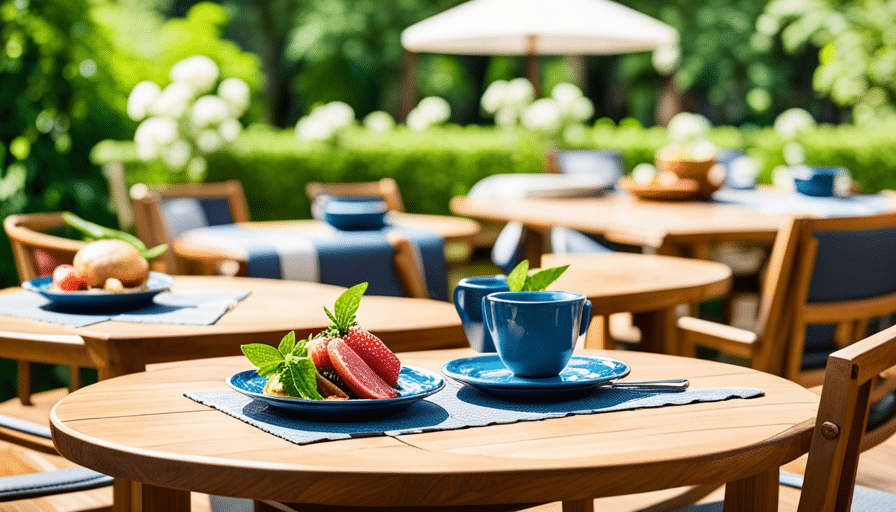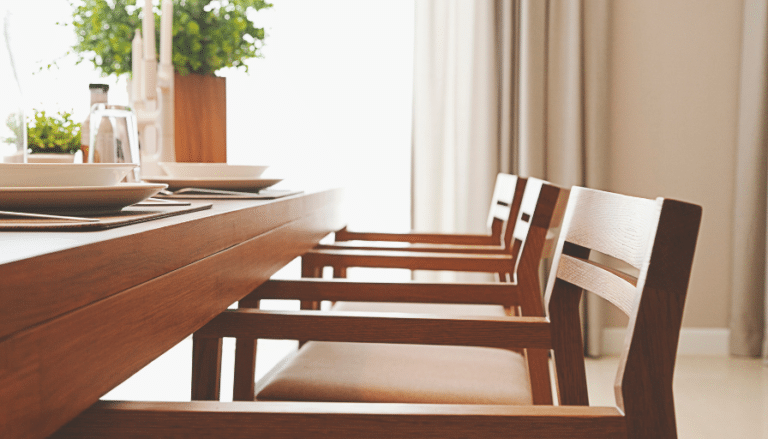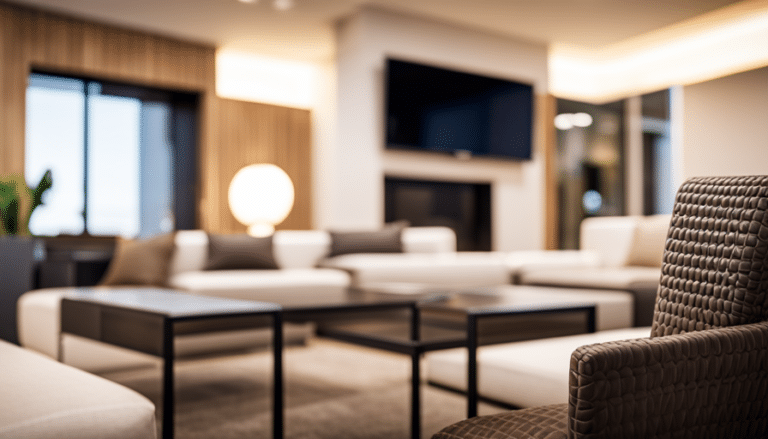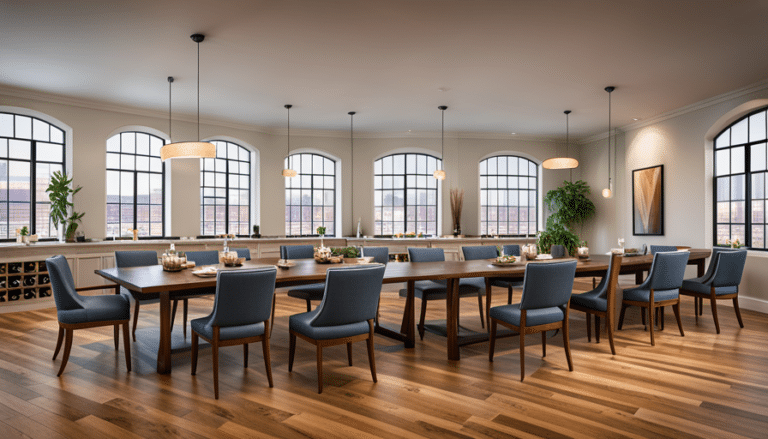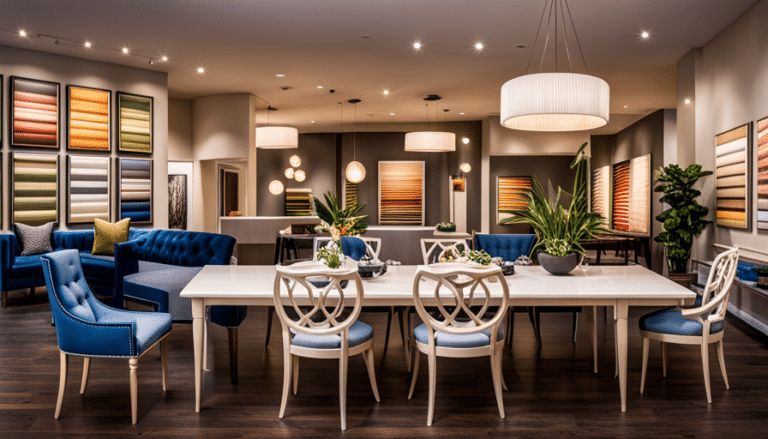Are Leather Dining Chairs Suitable for Outdoor?
Leather dining chairs are a popular choice for indoor settings due to their luxurious appearance and comfortable feel. However, when it comes to using leather dining chairs outdoors, there are several important factors to consider.
This article aims to explore the suitability of leather dining chairs for outdoor environments, taking into account their limitations, the effects of weather exposure on leather, and the necessary maintenance considerations. Additionally, alternative materials for outdoor seating will be examined, as well as the importance of balancing aesthetics with practicality in chair selection.
Expert tips for extending the lifespan of outdoor leather furniture will also be provided. By understanding the challenges and limitations associated with using leather dining chairs outdoors, individuals can make informed decisions about their outdoor seating options and ensure the longevity of their furniture.
Understanding the Limitations of Leather in Outdoor Environments
Understanding the limitations of leather in outdoor environments is crucial when considering the suitability of leather dining chairs for outdoor use.
Leather is a natural material derived from animal hides, and while it possesses certain desirable qualities such as its luxurious appearance and comfortable feel, it is not inherently designed to withstand the elements.
One of the primary limitations of leather in outdoor settings is its lack of weather resistance. Leather is susceptible to damage from moisture, excessive heat, and prolonged exposure to sunlight. When exposed to rain or high humidity, leather can become waterlogged and prone to mold and mildew growth.
Additionally, leather is not as durable as other materials commonly used for outdoor furniture, such as synthetic fabrics or metals. It is more prone to scratching, tearing, and fading over time, especially when exposed to harsh weather conditions.
Therefore, if one intends to use leather dining chairs outdoors, it is important to take precautions to protect them from direct exposure to the elements, such as using waterproof covers or bringing them indoors during inclement weather.
Assessing the Effects of Weather Exposure on Leather
Examining the impact of weather conditions on the durability and resilience of furnishings can elicit a sense of concern and curiosity among individuals. When it comes to leather dining chairs, the effects of sun and rain exposure can be significant.
Leather is known for its softness, elegance, and luxurious feel, but it is not inherently suitable for outdoor use. The sun’s UV rays can cause significant damage to leather over time. Prolonged exposure to sunlight can lead to fading, discoloration, and a loss of the material’s natural oils, making it brittle and prone to cracking. Additionally, excessive heat can cause the leather to dry out and lose its flexibility, further compromising its durability.
Rain can also have detrimental effects on leather. When leather gets wet, it absorbs moisture, which can lead to mold and mildew growth. These can cause discoloration, unpleasant odors, and, in severe cases, structural damage. Moreover, the constant cycle of getting wet and drying out can lead to the leather becoming stiff and prone to cracking.
In outdoor settings, the durability of leather dining chairs is significantly compromised. While occasional exposure to mild weather conditions may not cause immediate damage, long-term exposure to sun and rain can significantly reduce the lifespan and appearance of the leather. It is advisable to opt for alternative materials specifically designed for outdoor use to ensure longevity and maintain the aesthetic appeal of outdoor furnishings.
Maintenance Considerations for Outdoor Leather Furniture
Maintenance considerations for outdoor leather furniture should be taken into account to ensure the longevity and preservation of these luxurious furnishings in the face of harsh weather conditions. Cleaning techniques play a crucial role in maintaining the appearance and quality of outdoor leather furniture.
Regular cleaning is necessary to remove dirt, dust, and debris that can accumulate on the surface. It is recommended to use a mild soap solution and a soft cloth to gently clean the leather. Harsh chemicals and abrasive materials should be avoided as they can damage the leather.
In addition to regular cleaning, applying protective coatings can help safeguard outdoor leather furniture from weather-related damage. Protective coatings create a barrier that shields the leather from moisture, UV rays, and other elements. These coatings can be in the form of sprays, waxes, or creams specifically designed for outdoor use. Before applying any coating, it is important to thoroughly clean the leather and ensure it is completely dry.
It is worth noting that the effectiveness of cleaning techniques and protective coatings may vary depending on the type and quality of the leather used in the furniture. Therefore, it is advisable to consult the manufacturer’s recommendations or seek professional advice to determine the most suitable maintenance approach for specific outdoor leather furniture.
By following proper cleaning techniques and utilizing protective coatings, the lifespan of outdoor leather furniture can be extended, allowing it to withstand the challenges posed by outdoor environments.
Exploring Alternative Materials for Outdoor Seating
Exploring alternative materials for seating in outdoor environments offers a wide range of options that can enhance both the aesthetic appeal and durability of outdoor furniture. When it comes to outdoor seating, it is crucial to consider the weather resistance of the materials used. While leather dining chairs may be suitable for indoor use, they are not typically recommended for outdoor settings due to their limited ability to withstand harsh weather conditions.
Fortunately, there are several alternative materials that are specifically designed to withstand outdoor elements. One option is synthetic wicker, which is made from durable and weather-resistant materials such as resin or polyethylene. Synthetic wicker offers the look and feel of natural wicker but with enhanced durability and resistance to fading, peeling, and cracking.
Another popular alternative material for outdoor seating is aluminum. Aluminum furniture is lightweight, rust-resistant, and easy to clean. It can withstand exposure to rain, sun, and temperature changes without losing its structural integrity. Additionally, aluminum furniture can be easily customized with various finishes and colors to suit different outdoor settings.
Other alternative materials for outdoor seating include teak, wrought iron, and recycled plastic. Each material offers unique benefits in terms of weather resistance, durability, and maintenance requirements. By exploring these alternative materials, individuals can find suitable options that not only enhance the aesthetics of their outdoor spaces but also ensure long-lasting durability in various weather conditions.
Balancing Aesthetics and Practicality in Outdoor Chair Selection
When considering outdoor seating options, it is important to strike a balance between the aesthetic appeal and practicality of the chosen chairs, ensuring they complement the outdoor space while also being durable and weather-resistant.
Choosing weather-resistant materials is crucial in order to prevent damage from exposure to the elements. Leather, while a luxurious and stylish option for indoor dining chairs, may not be the most suitable choice for outdoor use. Leather is not naturally weather-resistant and can easily be damaged by moisture, sunlight, and other outdoor elements. It is prone to fading, cracking, and developing mold or mildew when exposed to rain or high humidity. Additionally, leather requires regular maintenance and conditioning to keep it in good condition, which can be time-consuming and costly.
Finding stylish outdoor seating options is still possible without opting for leather. There are a variety of materials available that are specifically designed to withstand outdoor conditions. For example, synthetic wicker, aluminum, teak, and plastic are all popular choices for outdoor chairs due to their durability and resistance to weather damage. These materials can be shaped and colored to mimic the look of leather or other luxurious materials, providing a stylish and practical alternative for outdoor seating.
When selecting outdoor chairs, it is important to prioritize weather-resistant materials that can withstand the elements without sacrificing style. Leather, although luxurious, may not be the most suitable option due to its susceptibility to damage from moisture and sunlight. Exploring alternative materials specifically designed for outdoor use can provide stylish and durable seating options that enhance the aesthetic appeal of outdoor spaces.
Expert Tips for Extending the Lifespan of Outdoor Leather Furniture
One key factor in preserving the longevity of outdoor leather furniture is implementing expert techniques that effectively combat the damaging effects of moisture and sunlight. Extending the durability of outdoor leather chairs requires specific measures to protect the leather surfaces from these elements.
To begin, it is crucial to apply a protective sealant to the leather. This sealant acts as a barrier, preventing moisture from seeping into the leather and causing damage. Additionally, it helps to shield the leather from the harsh effects of sunlight, such as fading and cracking.
Regular cleaning is also essential for maintaining outdoor leather furniture. It is recommended to use a mild soap or leather cleaner to remove dirt and debris that may accumulate over time. It is important to avoid using harsh chemicals or abrasive cleaning tools, as they can damage the leather surface.
Furthermore, it is advisable to keep outdoor leather chairs covered when not in use. This will provide an extra layer of protection against the elements and help prevent unnecessary wear and tear.
Lastly, it is important to inspect the leather regularly for any signs of damage or wear. If any issues are detected, it is best to address them promptly to prevent further deterioration.
By following these expert tips and implementing proper care techniques, the lifespan of outdoor leather furniture can be significantly extended, allowing for continued enjoyment and aesthetic appeal.
Frequently Asked Questions
Can leather dining chairs be left outside all year round?
Outdoor leather furniture can be waterproofed to protect it from the elements. Benefits of using leather dining chairs for outdoor spaces include durability, easy maintenance, and a luxurious aesthetic.
How often should outdoor leather furniture be cleaned?
Regular cleaning of outdoor leather furniture is important to maintain its appearance and longevity. Proper cleaning techniques help remove dirt, stains, and mold, preventing damage and preserving the material’s integrity. Regular maintenance ensures the furniture’s durability and extends its lifespan.
Are there any specific weather conditions that leather dining chairs cannot withstand?
Leather dining chairs can withstand most weather conditions, but may be less suitable in humid climates. To protect them from rain, it is advisable to use a waterproof cover or store them indoors when not in use.
Is it possible to restore the color and shine of outdoor leather furniture?
Restoring outdoor leather furniture requires special care and products designed for outdoor use. Protecting outdoor leather furniture involves using UV protectants and waterproofing sprays to prevent fading and damage from the elements. Regular cleaning and conditioning are also recommended to maintain the color and shine.
Are there any specific maintenance products recommended for outdoor leather furniture?
Outdoor leather furniture maintenance requires specific products to maintain its color and shine. The best products for outdoor leather furniture include specialized cleaners, conditioners, and protectants designed to protect and restore the leather’s durability and appearance in outdoor conditions.
Conclusion
In conclusion, while leather dining chairs can add a touch of elegance to outdoor spaces, they are not the most suitable choice due to their limitations in outdoor environments.
Leather is prone to damage from weather exposure and requires regular maintenance to preserve its quality.
Therefore, it is advisable to explore alternative materials such as synthetic leather or weather-resistant fabrics that can withstand outdoor conditions.
By considering both aesthetics and practicality, one can make an informed decision when selecting outdoor seating that will enhance the longevity and appeal of their outdoor space.

